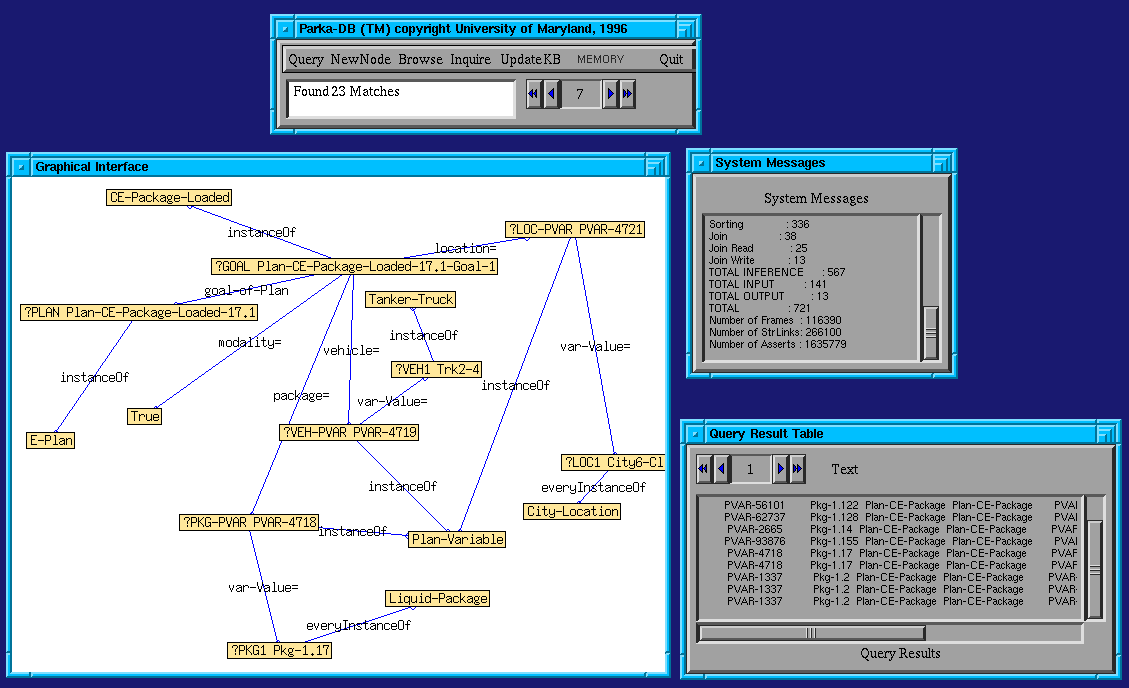
Screenshot of a PARKA-DB query (click for full scale picture)

Screenshot of a PARKA-DB query (click for full scale picture)
More specifically, Parka allows the user to define a frame-based knowledge base with class,subclass, and property links used to encode the ontology. Property values can themselves be frames, or alternatively can be string, numeric values, or specialized datastructures (used primarily in the implementation). The Parka language allows exceptions, in the form of multiple-inheritance, and provides extremely efficient (and efficiently parallelizable) algorithms for performing inheritance using a true inferential-distance-ordering calculation.
Parka has also been shown to effectively compute recognition, and also to handle extremely complex ``structure matching'' queries -- a class of conjunctive queries relating a set of variable and contraints and unifying these against the larger KB. While it is difficult to exactly compare KR languages, a very loose categorization would put Parka as more expressive than Classic due to the Parka's ability to handle exceptions, although slightly less expressive than Loom due to the lack of extensive numerical capabilities. (for papers on Classic, Loom and others, search the databasess and logic programming bibliography ). The manual for the Parka language and more details on past results can be found in our publications page .
One of the key features of Parka is that it has been shown to efficiently handle its inferencing on KBs containing millions of assertions. Early work on the system gained most of its efficiency through the use of massive parallelism , however in recent years we've made increasing use of database management techniques to remove the need for parallelism (although still allowing for efficient parallelization). The latest version of Parka uses DBMS technologies to support inferencing and data management. In particular, this system, called "Parka-DB" was developed to run on generic, single processor (or parallel) systems with significantly less primary memory requirements than the previous versions.
NOW AVAILABLE ON THE NET -- SEVERAL EXTREMELY LARGE KNOWLEDGE BASES you can download.
See the pages below for more information on Parka and on its applications,
 PARKA-CM
PARKA-CM PARKA-DB
PARKA-DB High Performance PARKA
High Performance PARKA CaPER -
A case-based planning system.
CaPER -
A case-based planning system.
 Hybrid Knowledge Base / Database Support
Hybrid Knowledge Base / Database Support
 ForMAT with PARKA
ForMAT with PARKA
